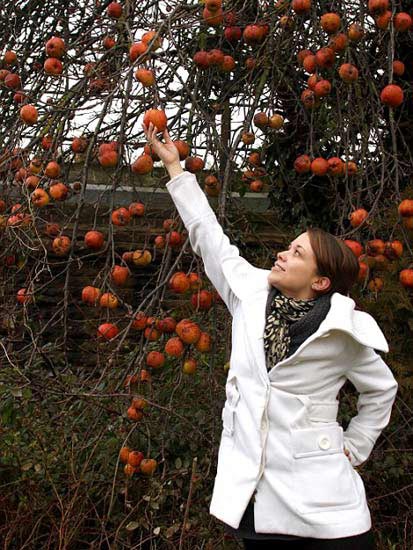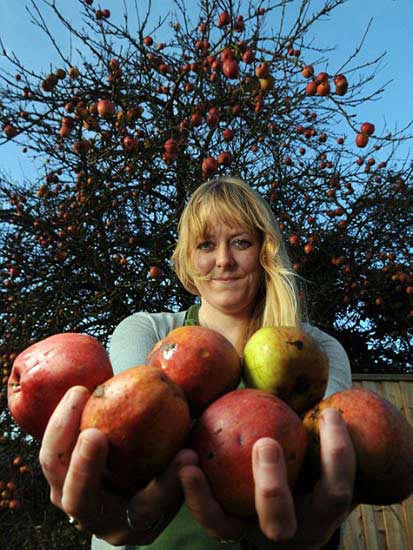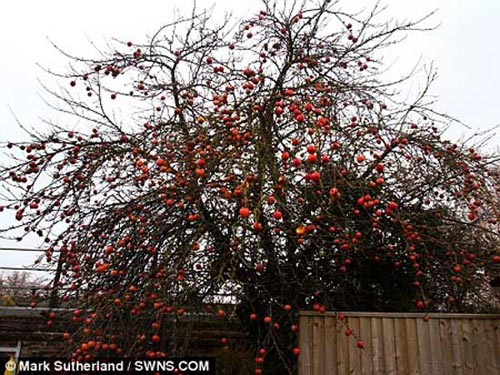Apple tree with the best cold-resistant fruit
This is astonishing, a difficult question to answer to local people when they witness an apple tree fruit in January of the coldest decade of the decade. The magic of creation or a case of gene mutation?

Emma Cox is picking an apple on a fruitful wild apple tree that has surprised the locals.
Last winter has been considered the harshest winter in 10 years, but a wild apple tree is still full of berries. This has made local people extremely surprised and excited.
While the normal apple tree only produces fruits from May to October, most of the fruit will fall to the ground in the winter or be 'destroyed' by the cold and frost.
Ben Pike, 52, an engineer at Orchard Link, thinks that this is the best cold apple tree he has ever known.

A crop survives the harsh winter.
He said that he could not explain why apple trees could survive at such freezing temperatures. Apples are harvested many times, as early as August, some plants are harvested in late October or early November. In case the weather is still mild, some trees can be left to Christmas. . But giving fruits in January is amazing.
Agricultural engineer Jane Schofield, 52, described the apple tree as a miracle, unusual for seeing apples on the tree in January of the year. This evokes curiosity and surprise because the apple tree has not been knocked down in such a cold weather.

Wild apple trees show hundreds of apples.
People here say it is fun to not enjoy such special apples if it is not frozen like ice. Meanwhile Chris Patt, 57, a local orchard owner, thinks this is a supernatural crop. The apple tree must be genetically mutated or well stimulated, causing its fruit to not fall off.
Chris Patt said that the natural mechanism in the tree causes the apples to fall off as hormones. Under normal conditions, the cell layer where the stem is attached to the branch will receive a signal when the apple is ripe and ready to fall. After these signals, the cells will shrink and the apple will fall. So Chris assumed that the apples of this particular apple tree did not send the signals correctly.
- Ancient apple trees spread out with 10 football fields
- Modern apple tree is a hybrid of at least 4 wild apples
- The world's first yellow fleshed apple apple
- Apple tree is poisonous with 50 different apple varieties on 1 tree
- Effective healing effects from apple apples
- The truth about 'Newton's apple tree' 400 years ago
- Cao Bang restores many specialty fruit varieties
- 250 varieties of apples grow together on a tree
- Not the apple, 'The forbidden fruit' Adam and Eve ate in the Garden of Eden is what fruit?
- Admire the miraculous tree that produces 40 fruits in a year
- You can eat the wrong kind of sugar without knowing it
- Why is apply good for your stomach?
 The truth about the mysterious red-haired giant at Lovelock Cave
The truth about the mysterious red-haired giant at Lovelock Cave Inunaki Tunnel: The haunted road leading into Japan's 'village of death'
Inunaki Tunnel: The haunted road leading into Japan's 'village of death' The mystery of the phenomenon of human reflection before dying
The mystery of the phenomenon of human reflection before dying 6 mysterious phenomena, although science has been developed for a long time, still cannot be answered
6 mysterious phenomena, although science has been developed for a long time, still cannot be answered